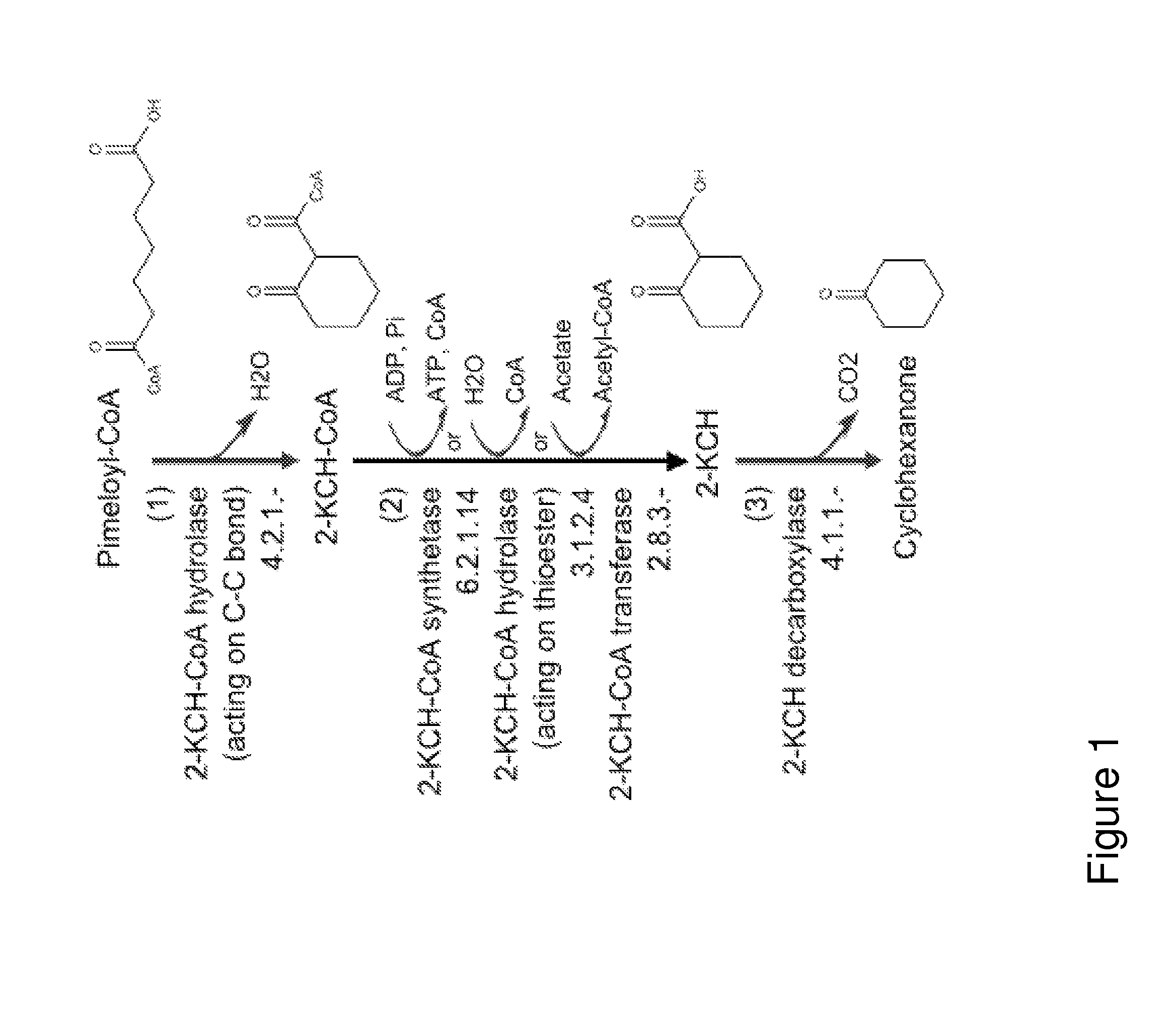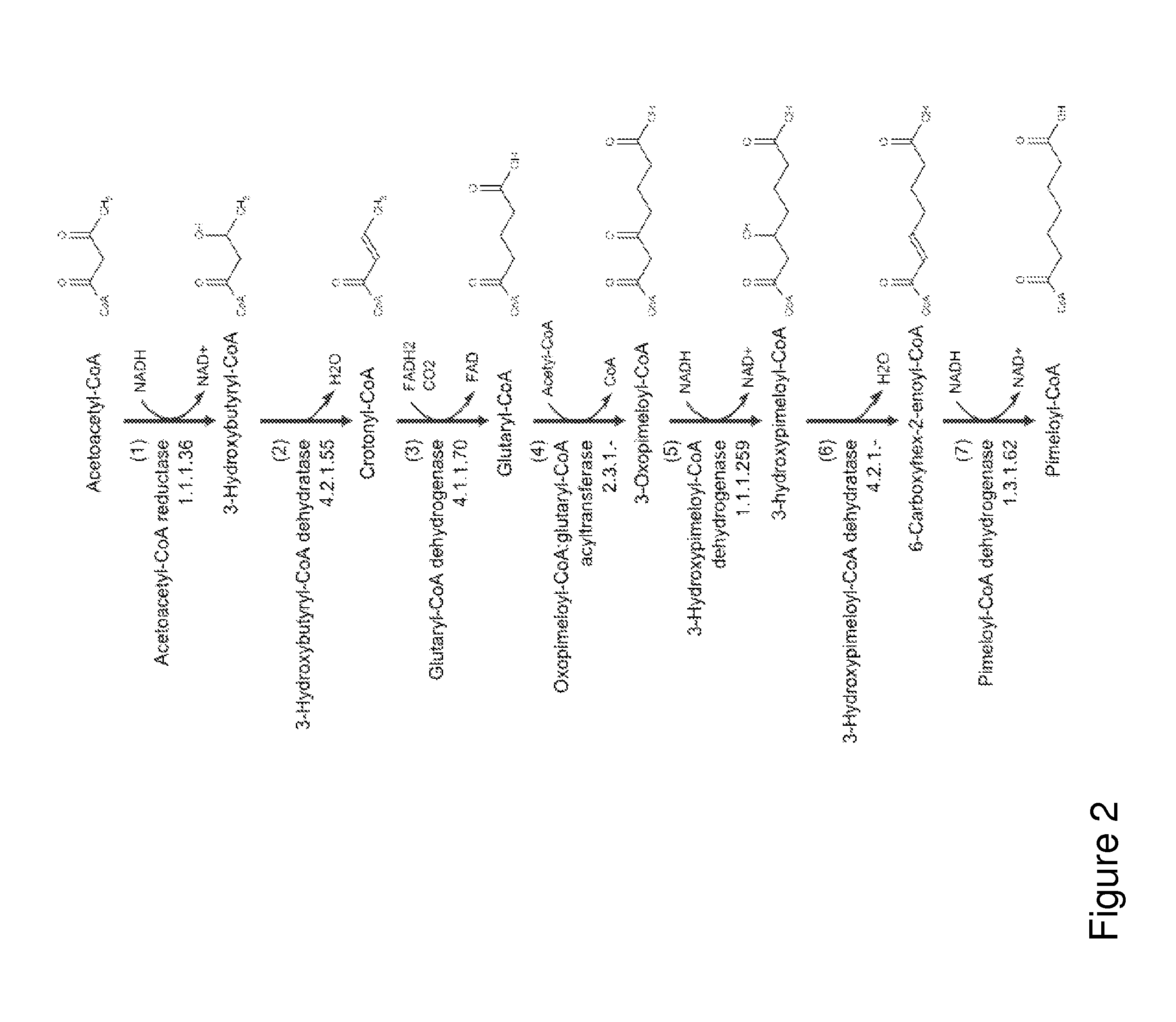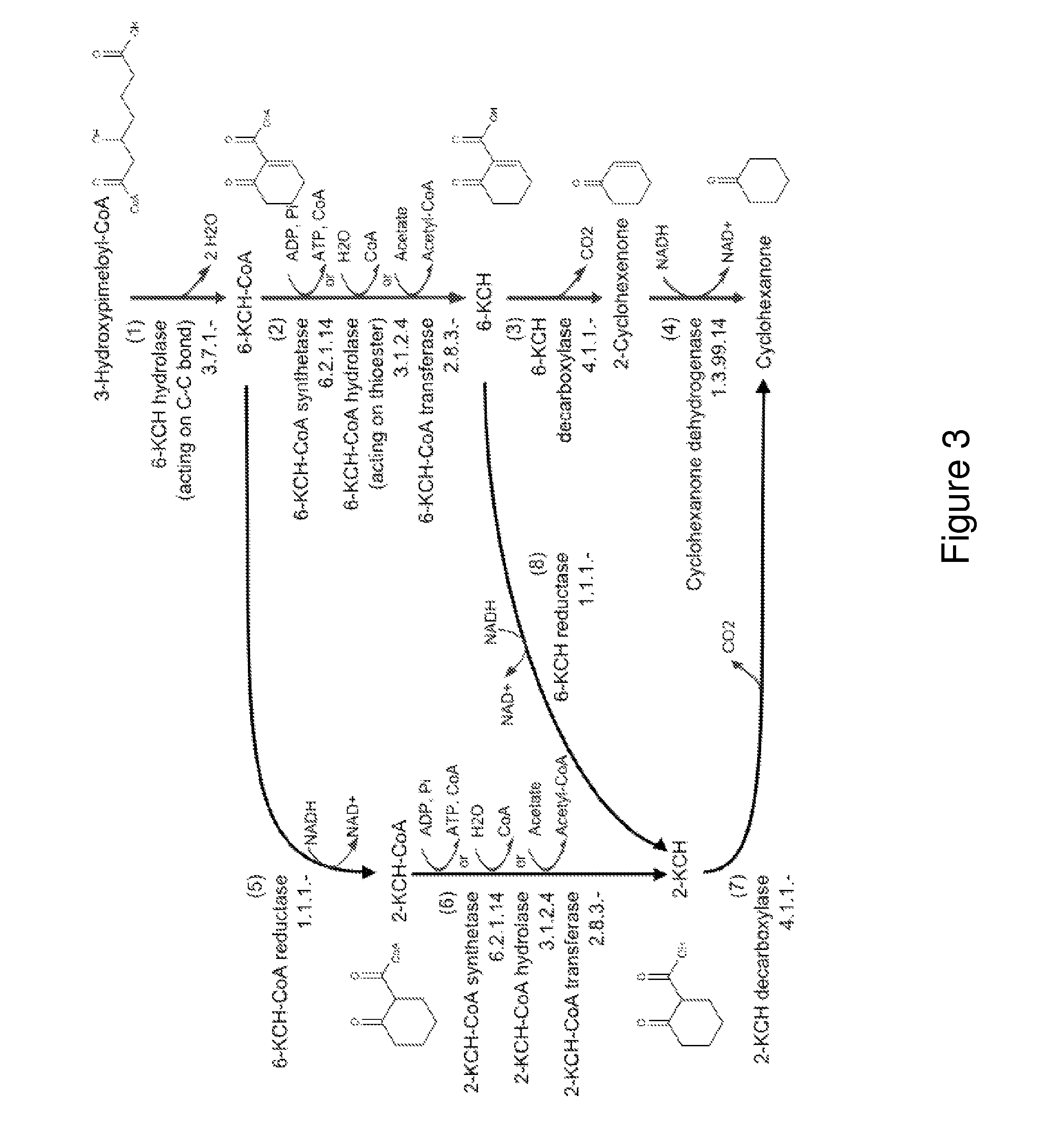Organisms for the production of cyclohexanone
a technology of cyclohexanone and organisms, applied in the field of biosynthetic processes and organisms, can solve the problem that the cost of cyclohexanone is mainly subject to the cost of raw materials of pure benzen
- Summary
- Abstract
- Description
- Claims
- Application Information
AI Technical Summary
Problems solved by technology
Method used
Image
Examples
example i
Preparation of a Cyclohexanone Producing Microbial Organism Having a Pimeloyl-CoA Pathway
[0301]This example describes the generation of a microbial organism capable of producing cyclohexanone from pimeloyl-CoA, as demonstrated in FIG. 1.
[0302]Escherichia coli is used as a target organism to engineer a cyclohexanone-producing pathway from pimeloyl-CoA as shown in FIG. 1. E. coli provides a good host for generating a non-naturally occurring microorganism capable of producing cyclohexanone. E. coli is amenable to genetic manipulation and is known to be capable of producing various products, like ethanol, acetic acid, formic acid, lactic acid, and succinic acid, effectively under anaerobic or microaerobic conditions. Moreover, pimeloyl-CoA is naturally produced in E. coli as an intermediate in biotin biosynthesis.
[0303]To generate an E. coli strain engineered to produce cyclohexanone from pimeloyl-CoA, nucleic acids encoding the enzymes utilized in the pathway of FIG. 1, described previ...
example ii
Preparation of a Cyclohexanone Producing Microbial Organism, in which the Cyclohexanone is Derived from Acetoacetyl-CoA Via Pimeloyl-CoA
[0308]This example describes the generation of a microbial organism that has been engineered to produce enhanced levels of the cyclohexanone precursor pimeloyl-CoA from acetoacetyl-CoA, shown in FIG. 2. This engineered strain is then used as a host organism and further engineered to express enzymes or proteins for producing cyclohexanone from pimeloyl-CoA, via the pathway of FIG. 1.
[0309]Escherichia coli is used as a target organism to engineer a cyclohexanone-producing pathway as shown in FIG. 1. E. coli provides a good host for generating a non-naturally occurring microorganism capable of producing cyclohexanone. E. coli is amenable to genetic manipulation and is known to be capable of producing various products, like ethanol, acetic acid, formic acid, lactic acid, and succinic acid, effectively under anaerobic or microaerobic conditions.
[0310]To ...
example iii
Preparation of a Cyclohexanone Producing Microbial Organism, in which the Cyclohexanone is Derived from Acetoacetyl-CoA and 3-Hydroxypimeloyl-CoA is a Pathway Intermediate
[0321]This example describes the generation of a microbial organism that has been engineered to produce cyclohexanone from acetoacetyl-CoA via 3-hydroxypimelate as an intermediate. 3-Hydroxypimelate is produced from acetoacetyl-CoA in five enzymatic steps, as shown in FIG. 2 (Steps 1-5). Cyclohexanone is then produced from 3-hydroxypimelate as shown in the pathway of FIG. 3 (Steps 1, 5, 6 and 7).
[0322]Escherichia coli is used as a target organism to engineer a cyclohexanone-producing pathway as shown in FIGS. 2 and 3. E. coli provides a good host for generating a non-naturally occurring microorganism capable of producing cyclohexanone. E. coli is amenable to genetic manipulation and is known to be capable of producing various products, like ethanol, acetic acid, formic acid, lactic acid, and succinic acid, effectiv...
PUM
| Property | Measurement | Unit |
|---|---|---|
| temperature | aaaaa | aaaaa |
| pH | aaaaa | aaaaa |
| of time | aaaaa | aaaaa |
Abstract
Description
Claims
Application Information
 Login to View More
Login to View More - R&D
- Intellectual Property
- Life Sciences
- Materials
- Tech Scout
- Unparalleled Data Quality
- Higher Quality Content
- 60% Fewer Hallucinations
Browse by: Latest US Patents, China's latest patents, Technical Efficacy Thesaurus, Application Domain, Technology Topic, Popular Technical Reports.
© 2025 PatSnap. All rights reserved.Legal|Privacy policy|Modern Slavery Act Transparency Statement|Sitemap|About US| Contact US: help@patsnap.com



